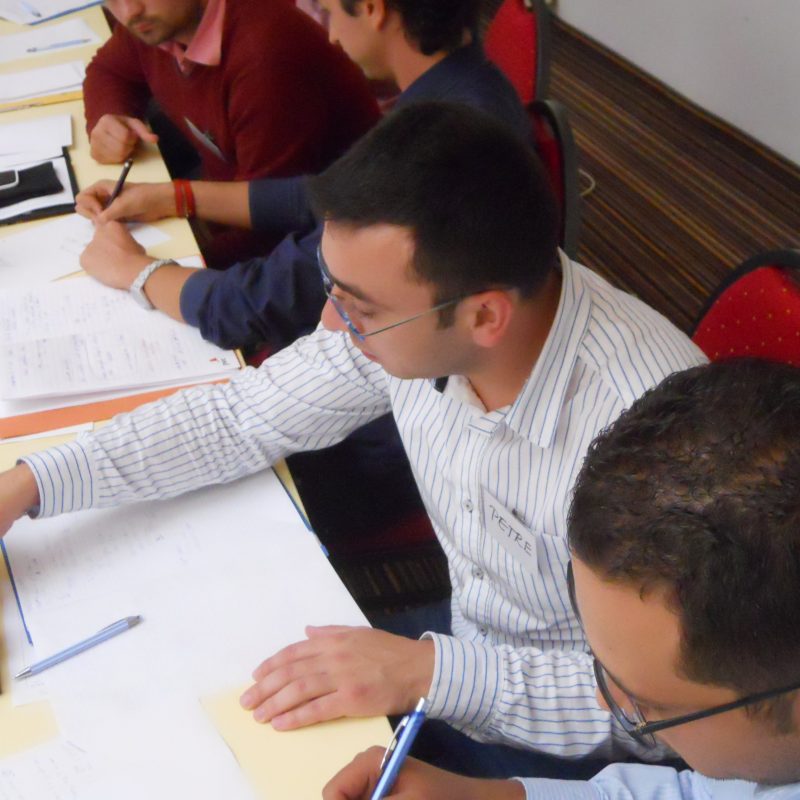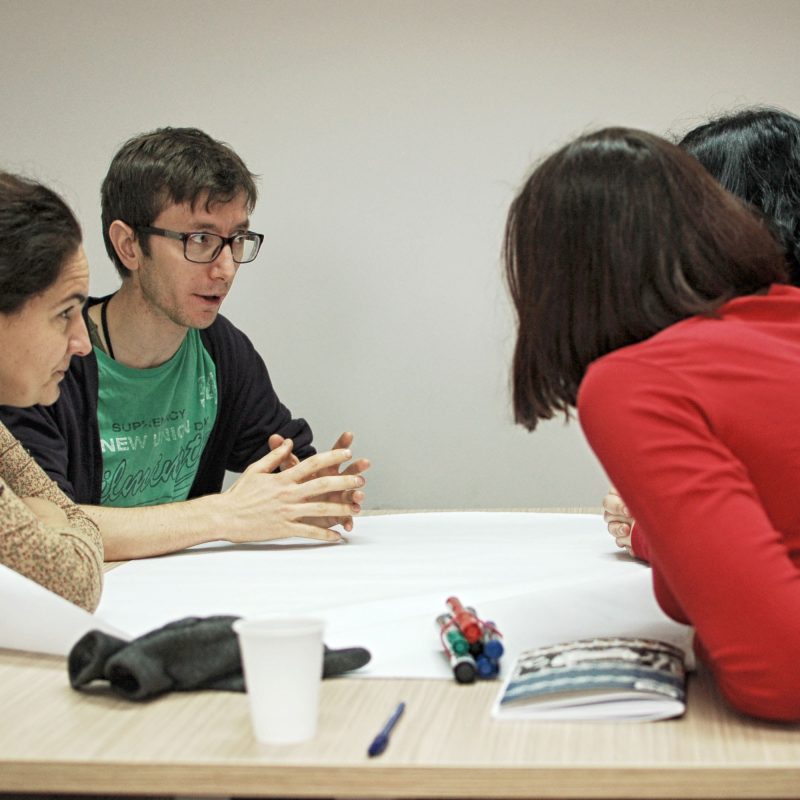
Are you ready to be an entrepreneur?
April 25, 2016
Think twice before you answer
April 25, 2016Start your business with a paper clip
Use this scenario to teach young people how creativity and innovation help in business development.
When to use it:
- evaluating creative potential;
- enhancing out of the box thinking/attitudes;
- understanding how creativity and innovation helps in business development.
Size of the group: 5 to 20 people
Age of the group: over 14 years old
Time:
Preparation: 5 minutes
Presentation: 20 minutes
Materials:
- pens
- sticky notes
- flip-chart papers
- markers
- paper clips
How:
Preparation
– Read the short presentation of the Alternative Uses Test from the facts box (see below).
Presentation:
- Initiate the discussion by asking the participants for a definition for “creativity”, and write down their answers on a flip-chart paper.
- Then ask them what are the main things /aspects that one person should have in order to be considered creative. The same, write down their answers on the flip-chart paper.
- Give to each participant a paper clip and many sticky notes, and then give them three minutes to think to as many as possible alternatives for using a paper clip. For each idea they should use a different sticky note.
- Then, ask the participants to stick their ideas on a flip-chart paper, while presenting them. For each new participant, ask them to stick on the flip-chart paper only the new ideas, something that was not previously mentioned.
- After all the ideas are on the flip-chart, with the help of the participants, split the ideas from the sticky notes in three categories:
- They use the clip paper as it is
- They change something in the design of the clip paper
- They add a new object to the clip paper creating a new product
Moreover, analyse together with the participants the ideas from the following perspectives:
- Fluency (how many uses each person found in comparison with the total number of uses found by the group)
- Originality (how unusual one idea is)
- Flexibility (how many areas the idea covers; for instance, if a person mentioned the idea of using clip papers as earrings, and also as parts of a necklace, then the person covered just one area of activity)
- Elaboration (how detailed the ideas were)
- Ask the participants how they reached these ideas, and then introduce the idea that creativity can be trained, through daily exercises like this one.
- Now, ask the participants why creativity could be important in business. Based on their answers, explain them that it is not enough to be creative, to think outside the box, but it is equally important to be able to put in practice your creativity for solving problems in the community, for responding to need or to respond to business opportunities. So, the creative ideas need to be put in practice through innovation.
Follow-up questions:
- Ask the participants to share what happen once they saw the others’ ideas on how to use a paper clip. Did they get more ideas as well?
- By looking at the alternative uses the participants found, ask them after how many alternative uses they actually started to get more creative in using a paper clip? What does this tell them? Help them reach to the idea that it is very important to keep challenge themselves, and that the best ideas usually come later, rather than at the beginning of the process.
Possible variations:
The chosen object for thinking alternative uses can vary (a jar, a spoon, a balloon, a chair, etc.).
The scenario can be extended with an additional activity in which you split the participants in groups of five, and ask the groups to prepare an ad / a poster to sell an idea resulted from the previous activity on how to use a paper clip. Then, they should pitch their ideas for one minute per group.
Other resources:
The Alternative Uses Task Test developed by J.P. Guilford in 1967, short presentation:
100 Uses ideas for Paper clips
FACTS BOX
Alternative Uses Task Test
Designed by J.P. Guilford in 1967, the Alternative Uses Task Test asks you to list as many possible uses for a common object, such as a brick, a shoe, or a paperclip, in a short period of time (usually, 2 to 5 minutes).
The test measures one person’s divergent thinking abilities. This contrasts with most traditional exams, which focus on convergent thinking, i.e. our ability to reach a single, correct solution to a problem. In comparison, this test asks people to come up with as many possible solutions.
In various research studies, the test proved that participants who listed a lot of ideas in the given time, they had more creative responses, and that the solutions listed at the beginning were less creative than the ones generated towards the end of the test. In other words, creativity can get richer through exercise and perseverance.
The test scoring is comprised of four components:
- Fluency – the number of alternative uses one person can think of;
- Originality – how unusual those uses are; evidence of ‘thinking different’;
- Flexibility – the range of ideas, in different domains and categories;
- Elaboration – amount of detail in describing the idea.
This test can be used everyday, starting from different items / objects, as a tool for developing your creativity.
Read about other creativity tests here.
You must be logged in to post a review.
Related products
-
Get ready for making profit! How many cakes you have to make?
Use this scenario to teach young people the basics of pricing, break-even point and profit.
-
Lead your organization with style
Use this scenario to help young people learn about and practice different leadership styles.
-
Have a better year!
Use this scenario to help young people to learn how to establish their annual objectives and priorities.





Reviews
There are no reviews yet.